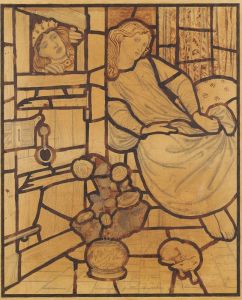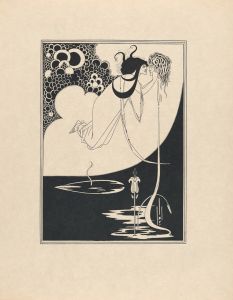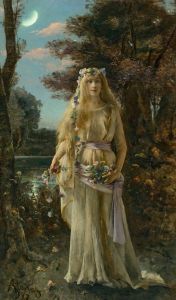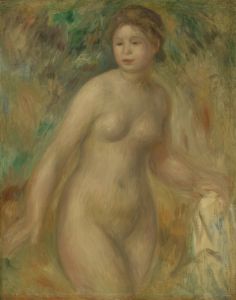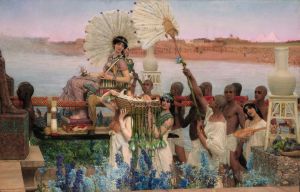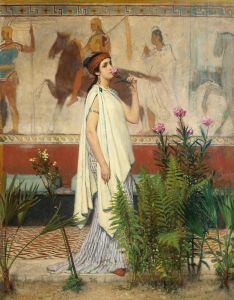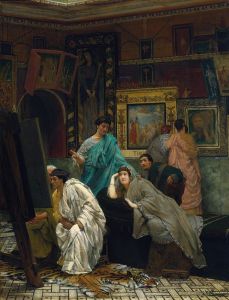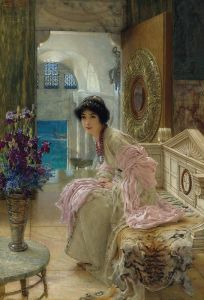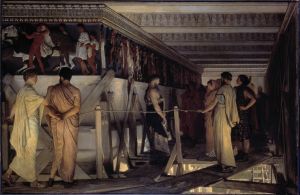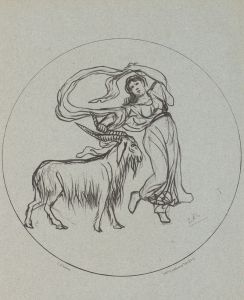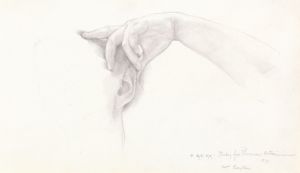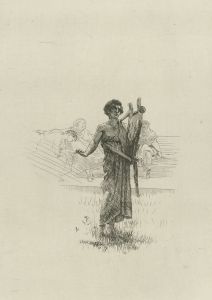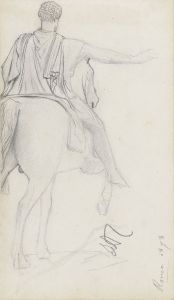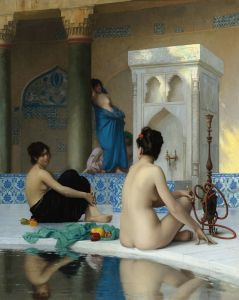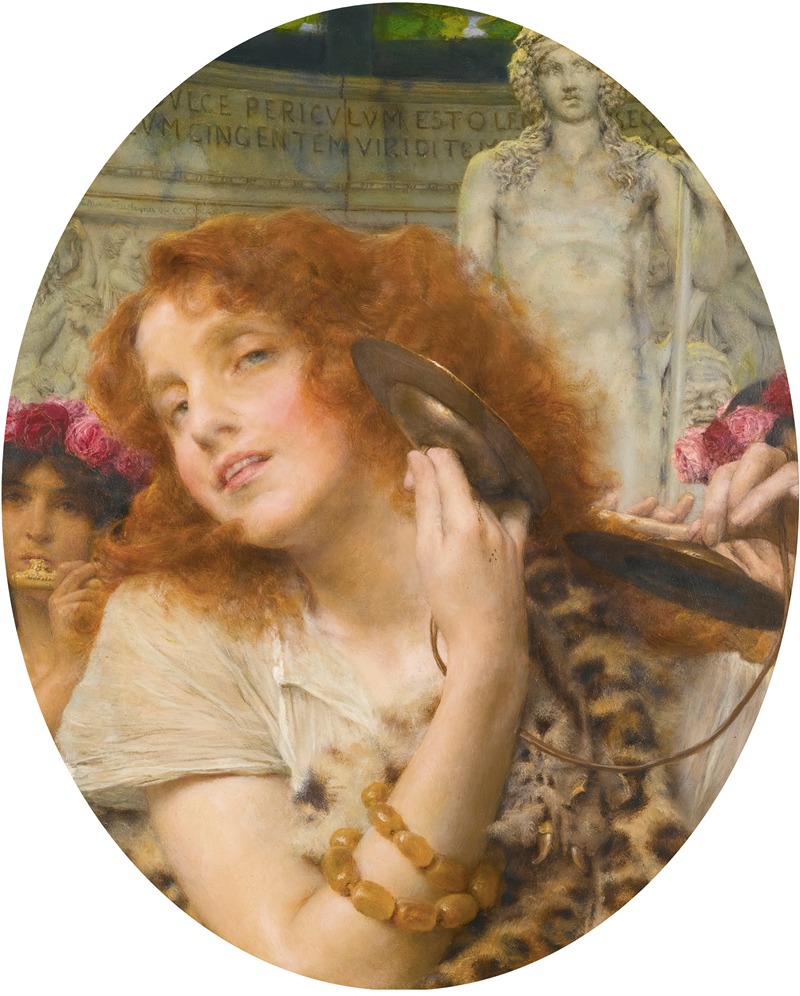
Bacchante
A hand-painted replica of Lawrence Alma-Tadema’s masterpiece Bacchante, meticulously crafted by professional artists to capture the true essence of the original. Each piece is created with museum-quality canvas and rare mineral pigments, carefully painted by experienced artists with delicate brushstrokes and rich, layered colors to perfectly recreate the texture of the original artwork. Unlike machine-printed reproductions, this hand-painted version brings the painting to life, infused with the artist’s emotions and skill in every stroke. Whether for personal collection or home decoration, it instantly elevates the artistic atmosphere of any space.
"Bacchante" is a painting by the renowned 19th-century artist Sir Lawrence Alma-Tadema, a Dutch-born painter who spent much of his career in England. Alma-Tadema is celebrated for his depictions of the luxury and decadence of the Roman Empire, as well as his meticulous attention to detail and historical accuracy. His works often feature classical themes, and "Bacchante" is no exception.
The painting "Bacchante" portrays a bacchante, a female follower of Bacchus, the Roman god of wine, revelry, and ecstasy. Bacchantes, also known as maenads in Greek mythology, were known for their frenzied and ecstatic worship of Bacchus, often depicted in art as engaging in wild dances and celebrations. Alma-Tadema's depiction captures the spirit of these mythological figures, embodying both the sensuality and the abandon associated with their rituals.
Alma-Tadema's work is characterized by its exquisite detail and use of color, and "Bacchante" is no exception. The painting showcases his skill in rendering textures and materials, from the softness of the bacchante's skin to the intricate patterns of her garments. The use of light and shadow in the painting enhances the three-dimensionality of the figure, bringing her to life in a way that is both realistic and idealized.
The setting of the painting is typical of Alma-Tadema's work, often featuring elements of classical architecture and lush landscapes that evoke the ancient world. His ability to create a sense of time and place is one of the hallmarks of his style, and "Bacchante" is a testament to his mastery of this technique. The background of the painting, while not the focal point, complements the figure of the bacchante, providing context and depth to the composition.
Alma-Tadema's interest in classical antiquity was not merely aesthetic; he was deeply knowledgeable about the period and often conducted extensive research to ensure the historical accuracy of his works. This dedication to authenticity is evident in "Bacchante," where the details of the costume and setting reflect a careful study of ancient Roman and Greek art and culture.
"Bacchante" is a fine example of Alma-Tadema's ability to blend historical accuracy with artistic imagination. His work was highly regarded during his lifetime, and he was one of the most successful artists of the Victorian era. Today, his paintings are celebrated for their beauty and their ability to transport viewers to another time and place.
The painting is part of the collection of the Getty Museum, which houses several of Alma-Tadema's works. The museum's collection provides insight into the breadth of his artistic output and his enduring influence on the art world. "Bacchante," like many of his paintings, continues to captivate audiences with its combination of technical skill and evocative subject matter.
In summary, "Bacchante" by Lawrence Alma-Tadema is a masterful representation of a classical theme, showcasing the artist's skill in capturing the essence of ancient mythology with precision and beauty. The painting remains a significant work within Alma-Tadema's oeuvre and a testament to his enduring legacy in the world of art.





